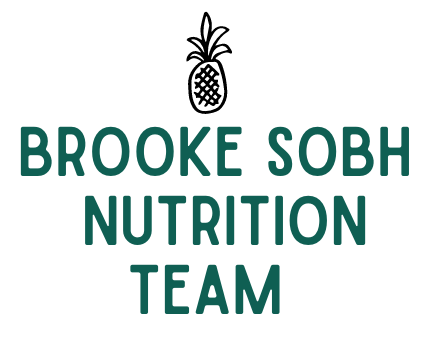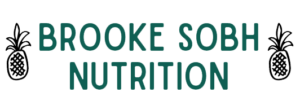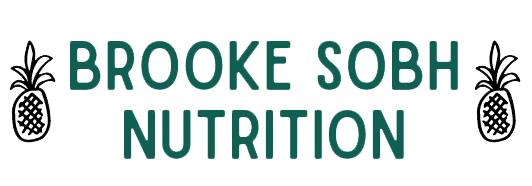Have high LDL “bad” cholesterol? We’re here to help!
What is LDL cholesterol?
LDL stands for low-density lipoprotein. When your body has too much LDL cholesterol, it can build up on the walls of your blood vessels. This buildup is called “plaque” and it can cause health problems like heart disease and stroke.
What is an optimal LDL cholesterol level?
You want your LDL cholesterol to be 100 mg/dL or lower. Luckily, you can lower LDL cholesterol just by changing your diet!
Here are some foods to consider adding to your diet to lower LDL cholesterol:
1) Whole Grains: the soluble fiber found in whole grains such as oats, barley, and whole grain cereals help lower LDL cholesterol. The fiber binds to the LDL cholesterol preventing it from being absorbed into the bloodstream.
2) Beans and Legumes: Beans and legumes are also high in soluble fiber which help lower LDL cholesterol by forming a gel in the intestines to block LDL absorption. As a bonus, fiber keeps us fuller for longer to help us lose weight.
3) Plant and Fish Oils: Plant and fish oils are rich in omega-3 fatty acids which help to reduce the amount of triglycerides in the bloodstream. A high triglyceride level combined with high LDL levels cause fatty buildups within the artery walls.
4) Fruits rich with Pectin: Fruits like apples, grapes, strawberries and citrus are high in…. you guessed it! Soluble fiber! These fruits are also high in vitamin C and antioxidants that can curb the oxidative effects of LDL cholesterol.
What Are HDL (high-density lipoproteins)
HDL (high-density lipoproteins) or “good” cholesterol is like a vacuum cleaner for cholesterol in the body. When it’s at healthy levels in your blood, it removes extra cholesterol and plaque buildup in your arteries and then sends it to your liver. Your liver expels it from your body. Ultimately, this helps reduce your risk of heart disease, heart attack and stroke.
What is an optimal HDL cholesterol level? Normal HDL levels are anything over 40 mg/dL but OPTIMAL HDL levels will be at 60 mg/dL or higher.
Want to increase your HDL cholesterol? Foods will not increase HDL cholesterol levels but certain lifestyle factors will, such as:
1) losing weight if obese
2) living an active lifestyle
3) avoiding smoking
4) decreasing inflammation in the body
Some hormones, such as estrogen or thyroid hormone, increase HDL concentrations. Exercise and moderate alcohol consumption are associated with higher HDL too, according to research. As we learned above, the right food choices can lower your LDL cholesterol, which can improve your HDL to LDL ratio.
Want to increase your heart health through exercise? There are 3 kinds of exercise that will boost your heart health according to Johns Hopkins Medicine:
1) Aerobic Exercise
What it does: Aerobic exercise improves circulation, which results in lowered blood pressure and heart rate.
How much is needed: Ideally, at least 30 minutes a day, at least five days a week.
Examples: Brisk walking, running, swimming, cycling, playing tennis and jumping rope. Heart-pumping aerobic exercise is the kind that doctors have in mind when they recommend at least 150 minutes per week of moderate activity.
2) Resistance Training
What it does: Resistance training has a more specific effect on body composition. For people who are carrying a lot of body fat (including a big belly, which is a risk factor for heart disease), it can help reduce fat and create leaner muscle mass. Research shows that a combination of aerobic exercise and resistance work may help raise HDL (good) cholesterol and lower LDL (bad) cholesterol.
How much is needed: At least two nonconsecutive days per week of resistance training is a good rule of thumb, according to the American College of Sports Medicine.
Examples: Working out with free weights (such as hand weights, dumbbells or barbells), on weight machines, with resistance bands or through body-resistance exercises, such as push-ups, squats and chin-ups.
3) Stretching, Flexibility and Balance
What they do: Flexibility workouts, such as stretching, don’t directly contribute to heart health. What they do is benefit musculoskeletal health, which enables you to stay flexible and free from joint pain, cramping and other muscular issues. That flexibility is a critical part of being able to maintain aerobic exercise and resistance training.
How much is needed: Every day and before and after other exercise.
Examples: any doctor recommended stretches, yoga, or YouTube stretch videos will do!
So the next time you need a little motivation to exercise, think about your heart health and get after it!


